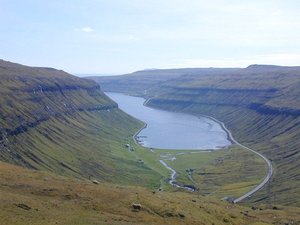Faroe Islands Nature Investigation (FINI)

Address
The Sornfelli Meteorological StationThe Faroese Geological Survey
Brekkutún 1
Hoyvík
Faroe Islands
Station manager
Lis Mortensenlm@jf.fo">E-mailPhone: +298 35 7000
Fax: +298 357001
Station Features
Opening year: 1999 Status: OpenFacilities
Station name and owner
The Faroe Islands Nature Investigation (FINI) belongs to Jarðfeingi (Faroese Earth and Energy Directorate) and partners.
Location
FINI comprises a growing number of monitoring sites placed on public and private land in the Faroe Islands. The 18 islands form a self-governing country under the sovereignty of the Kingdom of Denmark. The total area is approximately 1400 km2 and has a population of almost 50000 people (2010). The monitoring sites are placed on mountain slopes and summits that are accessible within an hour hike from the road and within an hour drive by car from the capital Tórshavn.
Climate data
Grey colours are WMO Climate Normals including maximum and minimum values. Blue colours are individual years.
Climate data for the stations where extracted via Copernicus Climate Data Store, from the global gridded reanalysis product:
ERA5 monthly averaged data on single levels from 1940 to present.
Description and source code: Roemer J.K. 2023. https://doi.org/10.5281/zenodo.10214922
Data Source: Hersbach et al. 2023. Copernicus Climate Change Service (C3S) Climate Data Store (CDS), https://doi.org/10.24381/cds.f17050d7
Biodiversity and natural environment
The Faroe Islands are a group of islands situated between the Norwegian Sea and the northeast Atlantic Ocean with more than 300 km distance to the next land area (approximately half way between Scotland and Iceland). The islands have an oceanic subarctic climate and are characterised by a high relief. The mountain areas are heavily grazed by sheep. The floral and faunal biodiversity is low, reflecting the isolated location, the extreme oceanic climate, the steep topography, and intensive land use. The most dominant vegetation in the Faroe Islands is grassland, found from sea level to the mountain tops. Racomitrium heaths and fell-field vegetation dominate the alpine vegetation. Calluna heaths are common in the lowlands. Birds dominate the terrestrial wild life.
History and facilities
Most of the monitoring sites of FINI are less than 10 years old. FINI has no station facilities at the sites, but can offer office facilities including internet access, other logistic support, and advice at FINI, Jarðfeingi, in Tórshavn.
General research and databases
The research at the FINI sites focuses on geohazards, meteorology, geophysics, and plant ecology. The existing database includes a bibliography of publications based on monitoring data.
Link to data: https://dataportal.eu-interact.org/stations
Station Monitoring
Human dimension
People in towns and villages live a modern European life. Houses are modern, the infrastructure is well developed and it is easy to travel by car. At the same time rich elements of traditional Faroese culture are deeply rooted in daily life: fishing, bird and whale hunting, traditional food and singing, and chain dancing. The language is Faroese which has close roots in the Old Norse language.
Access
You can arrive to the Faroe Islands all year by ship or by plane. The ferry leaves from Hanstholm, Denmark and Seyðisfjørður, Iceland. Look for www.smyrilline.com. Flight connections to the Faroe Islands leave from Copenhagen (Denmark), Aalborg (Denmark), Billund (Denmark), Reykjavik (Iceland), Bergen (Norway), London (UK) and Barcelona (Spain). Look for www.atlantic.fo. The local infrastructure in the Faroe Islands is well developed with busses and ferries. It is also possible to rent cars and helicopter routes are fairly cheap. Look for www.visitfaroeislands.fo.

